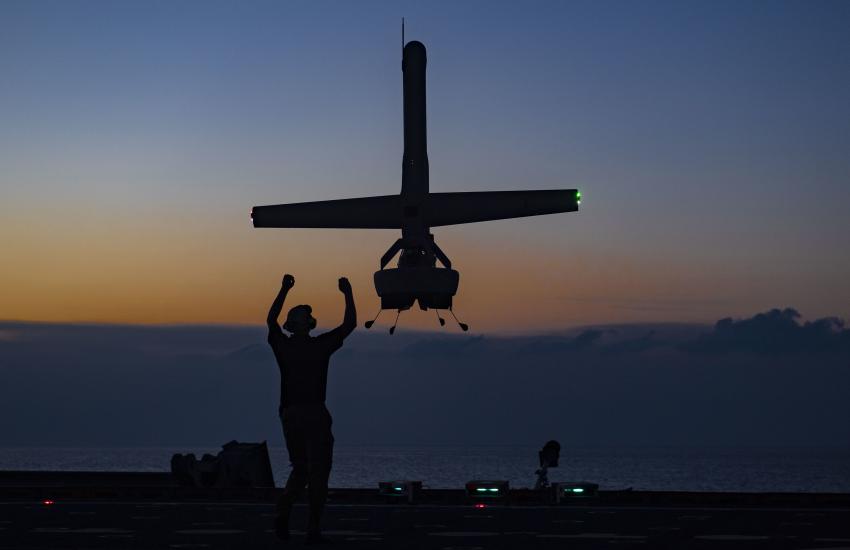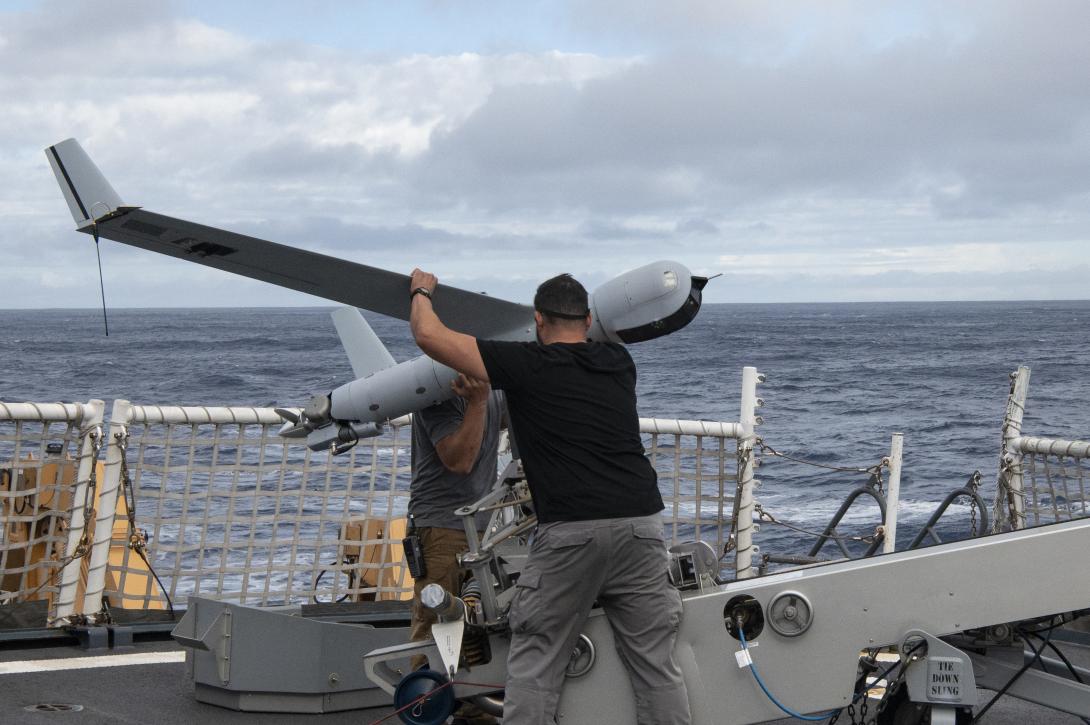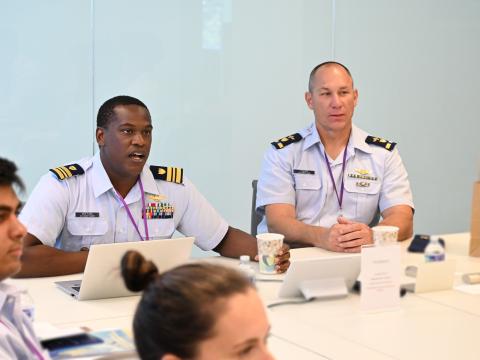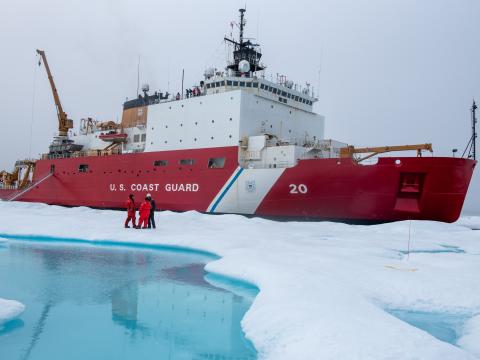USCG Establishes RAS PEO Days Before Historic Narcotics Interdiction Announcement
Marking a historic milestone, the U.S. Coast Guard announced Monday the combined interdiction of more than 76,140 pounds of illicit narcotics. The quantity of drugs offloaded at Port Everglades is the largest in history, according to the service. Notably, one of the 19 interdictions involved unmanned aerial system (UAS) operations aboard national security cutter (NSC) Hamilton.
“On July 21, Hamilton’s embarked unmanned aircraft system crew spotted suspicious go-fast vessel approximately 600 miles south of Acapulco, Mexico,” the Coast Guard press release stated. The specific interdiction led to seizing more than 3,395 pounds of cocaine, according to the report.
In an email to SIGNAL Media, the Coast Guard confirmed the use of Boeing subsidiary Insitu's ScanEagle drones in the operation.
"Since 2016, ScanEagle has 1,299 UAS deployments across 72 patrols, accumulating more than 8,845 flight hours," Lt. Cmdr. Steve Roth stated. "ScanEagle has supported interdiction of over 997 alien migrants and over 667 narco-traffickers; assisted in over 200 living marine resources and commercial fishing vessel safety boardings; and contributed to 27 search and rescue cases, saving or assisting over 121 lives.”
The company was selected by the Coast Guard for a contract worth more than $117 million to provide small UAS in 2018.
In February 2022, Insitu announced the use of its ScanEagle system to help the Coast Guard capture nearly $1 worth of illegal drugs.
Moday's announcement came days after the establishment of a new Coast Guard program executive office for the accelerated adoption of uncrewed systems.
Titled the Robotics and Autonomous Systems Program Executive Office, or RAS PEO, the mission will include the integration of evolving technology such as drones.
“This is one of those universally applicable technological advances that will allow us to execute operations better, faster, more safely and for fraction of the current cost,” Cmdr. Sam Hill stated in a MyCG report. “Robotics will change how we conduct every mission in the Coast Guard.”
While the Coast Guard has reportedly leveraged unmanned systems as early as 2004, according to MyCG senior reporter Kathy Murray's report, the service lags behind military agencies.

“The RAS PEO is designed to address this, in part by standardizing and centralizing a process that previous involved four separate program offices (CG-4, CG-6, CG-7, and CG-9),” Murray wrote. “Going forward, RAS PEO experts will be responsible for developing and implementing robotics across the organization, including infrastructure, training, workforce management and the plan for mission integration. The team will identify, assess, acquire and ensure this technology quickly gets to operators in the field."
As RAS PEO kicks off, the Coast Guard is working on implementing some initial changes. While the short-range UAS fleet will expand, the medium-range UAS aboard NSC will be replaced with V-BAT UAS.
“The initial UAS used on NSCs need special launching equipment and ‘lands’ through a system requiring a pole, a wire and a hook,” the report stated. Meanwhile, the V-BAT UAS allows for vertical takeoff, and the capability will eventually also be deployed on medium-endurance cutters and later other cutter classes.
A June 2024 Coast Guard release announced a contract award with a potential value of $198.1 million to Shield AI Inc. for its V-BAT UAS capabilities. Earlier this month, the Coast Guard completed testing of the technology before the official rollout.
"The Coast Guard currently has four NSCs outfitted for V-BAT capabilities, Coast Guard Cutters Midgett, Stone, James and Kimball," Roth stated. "All four cutters are scheduled to complete deployments by the end of fiscal year 2025. The Coast Guard plans to move forward with installing V-BAT equipment on the remaining NSCs as quickly as possible, working within each cutter’s schedule to maintain operational availability as needed. Installation on each cutter takes approximately five weeks."
Additionally, the “Long-Range UAS program plans to acquire aircraft and staff the joint program office with pilots, sensor operators and support personnel.”




Comments